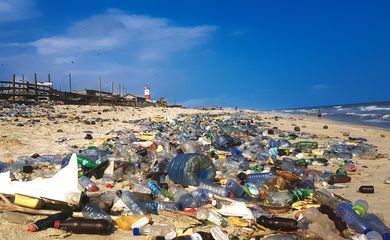Over 41% of urban waste was improperly disposed of in 2023

Only 58.5 percent of urban solid waste generated in 2023 was sent for environmentally appropriate disposal, as per a report entitled Panorama dos Resíduos Sólidos no Brasil 2024 (“Solid Waste Panorama in Brazil – 2024”), released Monday (Dec. 9) by the Brazilian Waste and Environment Association (ABREMA). The rest of what was discarded by Brazilians was disposed of inappropriately—in dumps, for instance, where 35.5 percent of the waste generated in the country was deposited.

Progress has been made compared to 2022, when the percentage of proper disposal stood at 57 percent. However, the report draws attention to failure to comply with the national solid waste policy, instituted in 2018, which set 2024 as the deadline for the definitive closure of dumps. “In addition to posing risks to the environment and public health, this scenario reveals that waste management in Brazil is still a long way from meeting the guidelines,” the text reads.
Waste generation
According to the estimate presented in the report, Brazilians generated an average of 1.047kg of solid urban waste per day in 2023, which means that the entire country yielded more than 221 thousand tons of waste and 81 million tons over the course of the year.
In total, 75.6 million tons of the waste generated in the country were collected in 2023—93.4 percent. Public services collected some 71.1 million tons through door-to-door collection, drop-off points, partnerships with waste picker associations and cooperatives, equivalent to 87.8 percent of what was generated. Of the other 4.5 million tons, 5.6 percent was collected by the informal activity of more than 700 thousand self-employed waste pickers, or was burned in the open on the property where it originated, or was not collected at all.
Recycling
Of all the discarded material that receives an environmentally appropriate destination, eight percent of dry waste is sent for recycling-more than 6.7 million tons, which were evaluated in 2023 to be reinserted into the production chain. Most of this recycling, 67.2 percent, was done by informal collectors and only 32.8 percent by public collection services, associations, and cooperatives.
Last year, 0.4 percent of the waste produced was sent to yards or composting plants, which is equivalent to around 300 thousand tons, of which, after sorting and composting, resulted in the production of 85,500 tons of organic compost.
In addition, 144,200 tons were received at the plants for preparing fuel derived from urban waste, less than 0.2 percent of the total, which resulted in 47,600 tons being used to produce thermal energy in industrial furnaces, as an alternative to fossil fuels.
Expenditure
According to the study, Brazilian municipalities spent BRL 34.7 billion on urban solid waste management last year. This includes services such as street sweeping, cleaning of public areas, collection, transportation, treatment, and final disposal of waste and refuse. When expenses include private spending, this amount rises to BRL 37 billion—up 9.4 percent from public and private spending on the sector in 2022.






